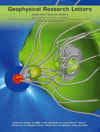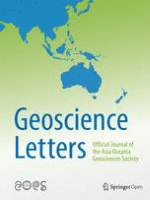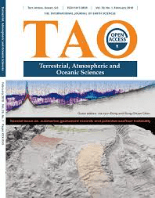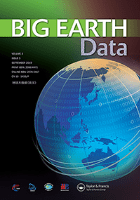
Earth System Science Data
Scope & Guideline
Catalyzing Insights into Earth's Complex Systems
Introduction
Aims and Scopes
- Data Integration and Standardization:
The journal emphasizes the integration of diverse datasets from various disciplines within Earth system sciences, promoting standardization to enhance data usability and interoperability. - Long-term Monitoring and Observational Data:
A core focus is on long-term monitoring datasets that track changes in environmental parameters over time, providing insights into trends related to climate change, biodiversity, and ecosystem dynamics. - Interdisciplinary Collaboration:
The journal encourages contributions that foster interdisciplinary collaboration, bringing together data from atmospheric sciences, hydrology, oceanography, and other fields to address complex Earth system challenges. - Innovative Data Collection Techniques:
The use of advanced technologies and methodologies, such as remote sensing, machine learning, and automated data collection systems, is highlighted to improve data accuracy and efficiency. - Public Accessibility and Open Data:
The journal advocates for open access to data, ensuring that datasets are freely available to the scientific community and the public to enhance transparency and facilitate further research.
Trending and Emerging
- Climate Change and Its Impacts:
Research focusing on the impacts of climate change, including datasets related to temperature, precipitation, and extreme weather events, is increasingly prominent, highlighting the urgency of understanding climate dynamics. - High-Resolution Remote Sensing Data:
There is a growing trend toward utilizing high-resolution remote sensing data to monitor environmental changes, land use, and vegetation dynamics, providing more detailed insights into Earth system processes. - Machine Learning and AI in Data Analysis:
The integration of machine learning and artificial intelligence techniques for data analysis is on the rise, allowing for enhanced data processing, pattern recognition, and predictive modeling. - Biodiversity and Ecosystem Services:
Emerging research themes increasingly focus on biodiversity datasets and ecosystem services, emphasizing the importance of understanding ecological interactions and their implications for sustainability. - Socio-Ecological Systems:
There is an increasing emphasis on datasets that explore the interactions between human activities and natural systems, reflecting a holistic view of environmental challenges and solutions.
Declining or Waning
- Local-Scale Studies:
There has been a noticeable decrease in publications centered on localized datasets or studies that do not contribute to broader global or regional datasets. The journal is increasingly favoring studies that provide comprehensive data applicable at larger scales. - Traditional Data Collection Methods:
As advanced technologies such as remote sensing and automated data collection gain prominence, papers relying solely on traditional field data collection methods are becoming less frequent. - Static Datasets:
The journal has shifted away from publishing static datasets that do not incorporate temporal changes or dynamic modeling, favoring datasets that offer time-series analysis or are part of a continuous monitoring effort. - Niche Environmental Studies:
Research focusing on highly specialized or niche environmental studies that do not integrate with larger Earth system models or datasets is declining, as the journal emphasizes interdisciplinary and integrative approaches.
Similar Journals

GEOPHYSICAL RESEARCH LETTERS
Shaping the Future of Earth Sciences Through Research.GEOPHYSICAL RESEARCH LETTERS is a renowned academic journal published by the American Geophysical Union that plays a pivotal role in advancing the field of Earth and Planetary Sciences. Established in 1974, this esteemed journal provides a platform for the latest research and innovations in geophysics, including but not limited to, solid earth, atmospheric sciences, and oceanography. With its impressive ranking of #7 out of 165 in Geophysics and #13 out of 195 in General Earth and Planetary Sciences according to Scopus, and being categorized in the Q1 quartile for both fields in 2023, it is a leading choice for academic and professional researchers alike. While GEOPHYSICAL RESEARCH LETTERS does not currently offer open access, it remains committed to disseminating high-quality, peer-reviewed scientific literature. With ongoing contributions expected through to 2024, this journal is essential for those who seek to deepen their understanding and engage with cutting-edge developments in geophysical research. Its influence and reach underscore its significance in shaping the future of geophysical inquiry.

All Earth
Advancing Knowledge for a Sustainable PlanetAll Earth is an esteemed open-access journal published by Taylor & Francis Ltd, dedicated to multidisciplinary research in the fields of Earth and Planetary Sciences, Global and Planetary Change, as well as Management, Monitoring, Policy, and Law. Since its inception in 2021, All Earth has swiftly positioned itself in the academic community, achieving notable rankings such as Q2 in Earth and Planetary Sciences and Q3 in related fields, showcasing its commitment to high-quality interdisciplinary scholarship. Researchers and professionals can benefit from its accessible content, which contributes to the ongoing discourse on critical environmental issues and innovative solutions for sustainable development. The journal is based in the United Kingdom and continues to be a vital source of information and inspiration for students and scholars aiming to tackle the pressing challenges of our planet through rigorous scientific inquiry and policy analysis.

Remote Sensing
Unlocking the Secrets of Our Planet with Cutting-Edge ResearchRemote Sensing is a highly esteemed journal published by MDPI, dedicated to the domain of Earth and Planetary Sciences. With an impressive impact factor reflected in its rank of #16 out of 195 in the general Earth and Planetary Sciences category, this journal achieves a commendable 92nd percentile among its peers, indicating its significant contribution to the field. Since its inception in 2009 as an Open Access journal, it has enabled researchers, professionals, and students from around the globe to access high-quality, peer-reviewed articles that delve into the latest advancements in remote sensing technologies, methodologies, and applications. Based in Switzerland, Remote Sensing serves as a vital platform for disseminating innovative research that supports and enhances our understanding of Earth's processes and environments, ensuring scientific knowledge remains freely accessible and impactful.

Boletim de Ciencias Geodesicas
Connecting Researchers with Groundbreaking Geodetic InsightsBoletim de Ciências Geodésicas is an esteemed academic journal published by the Universidade Federal do Paraná within its Centro Politécnico. Focused on the dynamic field of Earth and Planetary Sciences, this Open Access journal has been a pivotal resource since 1997, fostering the dissemination of critical research and innovative methodologies. With an impact factor indicative of its relevance in the discipline, Boletim de Ciências Geodésicas ranks in the Q3 quartile for Earth and Planetary Sciences as of 2023, showcasing its commitment to quality scholarship in a competitive field. Researchers and students alike will benefit from access to cutting-edge findings, given its broad scope that encompasses various aspects of geodesy and related sciences. The journal's convergence of research from 2005 to 2024 ensures that it remains at the forefront of emerging trends and fundamental developments in the discipline, further enhancing its esteemed reputation in the academic community.

Geoscience Letters
Pioneering Open Access in Earth SciencesGeoscience Letters, published by Springer, is a prominent open-access journal in the field of Earth and Planetary Sciences, recognized for its dedication to advancing knowledge and research in this vital area of study. With a reported impact factor that reflects its esteemed position—ranking in the Q1 quartile of Earth and Planetary Sciences, particularly as the journal ranks #48 out of 195 in the general category according to Scopus—the journal serves as a vital resource for researchers, professionals, and students. Since its inception in 2014, Geoscience Letters has facilitated the dissemination of high-quality research and critical insights, aiming to bridge the gap between scientific discovery and societal needs. Its commitment to open access ensures that the latest findings are readily available to a global audience, thus enhancing collaboration and innovation within the geosciences community.

TERRESTRIAL ATMOSPHERIC AND OCEANIC SCIENCES
Exploring the Depths of Earth and SkyTERRESTRIAL ATMOSPHERIC AND OCEANIC SCIENCES, published by SpringerNature, is a distinguished peer-reviewed journal that has been an essential platform for innovative research in the fields of atmospheric science, oceanography, and Earth and planetary sciences since its inception. With an Open Access policy established in 1990, the journal ensures wide dissemination of knowledge, allowing researchers, professionals, and students to access cutting-edge findings without restrictions. Based in Switzerland and featuring a comprehensive coverage from 1996 to 2024, the journal currently holds a Q3 ranking across various categories, indicating its growing significance in the scientific community. Although it is positioned within the 39th percentile in Earth and Planetary Sciences, its commitment to fostering high-quality research makes it a valuable resource for advancing understanding of terrestrial environments and their interconnections. Researchers seeking a platform for their work in atmospheric and oceanic sciences will find TERRESTRIAL ATMOSPHERIC AND OCEANIC SCIENCES to be an ideal venue for sharing their insights with a global audience.

Nature Reviews Earth & Environment
Connecting Research to Real-World Environmental ImpactNature Reviews Earth & Environment, published by SpringerNature, serves as an essential platform for researchers and professionals in the fields of environmental science, atmospheric science, and earth-surface processes. Since its inception in 2020, this distinguished journal has quickly established itself as a leading resource, achieving Q1 quartile rankings in multiple categories including Atmospheric Science and Pollution, reflecting its commitment to high-quality, impactful research. With an impressive Scopus ranking as #1 in its respective categories and a 99th percentile standing, the journal is pivotal for those seeking to explore cutting-edge advancements and critical insights in the interplay between our planet's environment and humanity. The publication encourages open discourse through its accessible content, aiming to inspire and inform its audience about pressing environmental challenges and innovative solutions. As it continues to converge through to 2024, Nature Reviews Earth & Environment stands out as a vital resource for anyone dedicated to understanding and preserving our planet.

METEOROLOGY AND ATMOSPHERIC PHYSICS
Elevating Knowledge in Meteorological SciencesMETEOROLOGY AND ATMOSPHERIC PHYSICS is a premier journal published by SPRINGER WIEN, dedicated to advancing the study of atmospheric phenomena and weather-related sciences. With an ISSN of 0177-7971 and an E-ISSN of 1436-5065, the journal has established itself as an important contributor in the field, particularly noted for its contributions in atmospheric science, holding a Q3 ranking in the 2023 category quartiles. Covering a wide array of topics from meteorological modeling to the physics of the atmosphere, it serves researchers, professionals, and students alike, facilitating the dissemination of significant findings and innovative research. The journal’s acceptance of articles until 2024 encourages a continuous influx of knowledge, and despite its lack of Open Access, it plays a crucial role in enriching the academic landscape for those engaged in Earth and planetary sciences, holding a commendable rank of 78 out of 148 in Scopus. Located in the scenic city of Vienna, Austria, the journal is positioned to harness the vibrancy of the academic community, providing a platform for valuable insights that can drive forward the field of meteorology and atmospheric physics.

Geoscientific Model Development
Innovative Approaches to Understanding Earth SystemsGeoscientific Model Development is a pioneering open-access journal published by COPERNICUS GESELLSCHAFT MBH since 2008, dedicated to advancing the field of Earth and Planetary Sciences through innovative modeling and simulation techniques. With its distinguished impact factor evidenced by its placement in the Q1 quartile for both Earth and Planetary Sciences and Modeling and Simulation, this journal serves as a leading platform for researchers and practitioners to disseminate their high-quality studies. The journal is indexed in Scopus with impressive rankings—particularly #22 out of 324 in Mathematics Modeling and Simulation and #15 out of 195 in General Earth and Planetary Sciences—reflecting its influential role in shaping contemporary research. By providing unrestricted access to groundbreaking articles, Geoscientific Model Development fosters a global dialogue among experts and students alike, encouraging collaboration and innovation in geoscience research. It stands out as an essential resource for anyone involved in the multifaceted study of Earth's systems and their interactions.

Big Earth Data
Pioneering Research at the Intersection of Earth and ComputingBig Earth Data is a prestigious open-access journal that has been at the forefront of advancing research in the intersection of earth science and computer technology since its inception in 2017. Published by TAYLOR & FRANCIS LTD in the United Kingdom, this journal is dedicated to disseminating groundbreaking findings and innovative methodologies in the fields of Earth and Planetary Sciences and Computer Science Applications. With a commendable impact factor and an impressive positioning in the Scopus rankings—claiming Q1 status in Computers in Earth Sciences and Q2 in Computer Science Applications—it serves as a vital resource for researchers, professionals, and students alike. The journal encourages submissions that explore the integration of big data technologies in managing, analyzing, and visualizing earth-related data, thereby fostering interdisciplinary collaboration. Since embracing its open-access model, Big Earth Data has enhanced the accessibility of high-quality research, promoting a broader dialogue in the scientific community and contributing to informed decision-making in global environmental challenges.